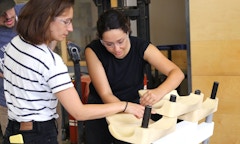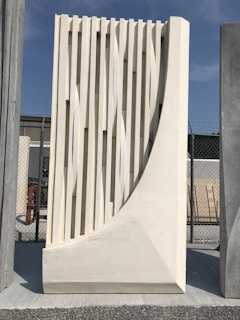
Diversity and Team Building
How can we be more equitable and inclusive and provide greater opportunities and create an ethos of diversity, equity, and inclusion in the workplace? I offer a few thoughts for consideration.

How can we be more equitable and inclusive and provide greater opportunities and create an ethos of diversity, equity, and inclusion in the workplace? I offer a few thoughts for consideration.

Prior to the summer of 2020 many people and organizations in the architecture/design industry spent time calling attention to the lack of diversity. While we are aware it affects many industries, I can only write and speak with accuracy to what happens in the industry I work in.

I remember taking a career test when I was in middle school. The outcome? I had a supposed interest in becoming a forest ranger. This seemed odd to me--in that I lived in a large metropolitan city and had never been in a forest.

In architecture, the façade is often the defining aspect of a building’s appearance, establishing the building’s public persona. From an engineering perspective, the façade is an assembly of building components with a critical impact on a range of performative metrics.

Like many businesses and institutions, we at FTI have been wrestling with challenges of diversity, equity, and inclusion (DEI), what it means to us, how to realize these important aspirations in the Institute.

This newsletter is different from what you usually expect from SKINS. We are talking about human connection, communication, language, and broadening our understanding of how we move through the world and evolve with the new information we receive. How do these aspects relate to the AECO Industry?

A design-build class at the University of Louisiana explores the territory of the “tiny-house.” Professor Geoff Gjertson describes the 216 square foot MODESTEhouse and shares his personal experience of living small.

Authors Christina Koukelli, Arup, Alejandro Prieto, Diego Portales University, and Serdar Asut, TU Delft, address the potentials of Shape Memory Alloys (SMAs) for the design of autoreactive facade systems without using additional energy.

This study, completed by an interdisciplinary team from the University of Buffalo and Alfred University explores a thermal mass application using terracotta blocks that can be reconfigured for different seasons.

2018 teams included; Morphosis, SHoP Architects, Sasaki/Studio NYL, University at Buffalo, AECOM, and Radical Matter. The ACAWorkshop is an outstanding model of industry-academia partnership aimed at the ongoing education of students and practitioners alike.

Augsburg University has announced a new curtainwall engineering compact program designed for the architect or engineer practicing internationally...


This paper, written by a team at the Technical University at Darmstadt, uses examples of 3D printed structural glass, reinforced thin-sheet façade panels, and nesting bricks that can be integrated directly into facades to support work successful industrial applications.

Architecture students from Philadelphia University took five of the top ten spots in the building Healthy building(s) competition. The student competition was conducted as a precursor to an upcoming conference...

Professor Timo Schmidt and Research Assistant David Bjelland of the University of Applied Sciences, Augsburg, propose a human centric planning guide for façade design that provides a tool to optimize façade components to match enhanced occupant well-being and health.

Technoform recently embarked on a research project with the University of Massachusetts Amherst and are excited about the opportunity to collaborate with academia. We believe that building strong partnerships and networks that lead to shared results progresses the industry.

Are you resilient? Do you bend to the winds of change or do you resist? Do you bounce back from adversity or is your recovery long, slow, and incomplete? Do you readily adopt lifestyle changes in response to personal health, economic, or environmental challenges, or is your response one of denial?

Precast Concrete Enclosures is an elective course taught by Assistant Professor Pablo Moyano Fernandez at Washington University in St. Louis. The primary goal of the course is to enable students to envision and materialize full-scale building envelopes using precast concrete.

Well, here we are well into the new year, for better or worse only time will tell. It seems that adversity fails to slow the clock; I don’t know about all of you, but certainly for me and others I’ve talked with time continues to flow at speed, perhaps even accelerating.

The Architectural Glass Institute (AGI) of Philadelphia, Pa., sponsored its second annual Architectural Glass Student Design Competition in January, where third-year Jefferson University architecture students competed to design glass learning pods.